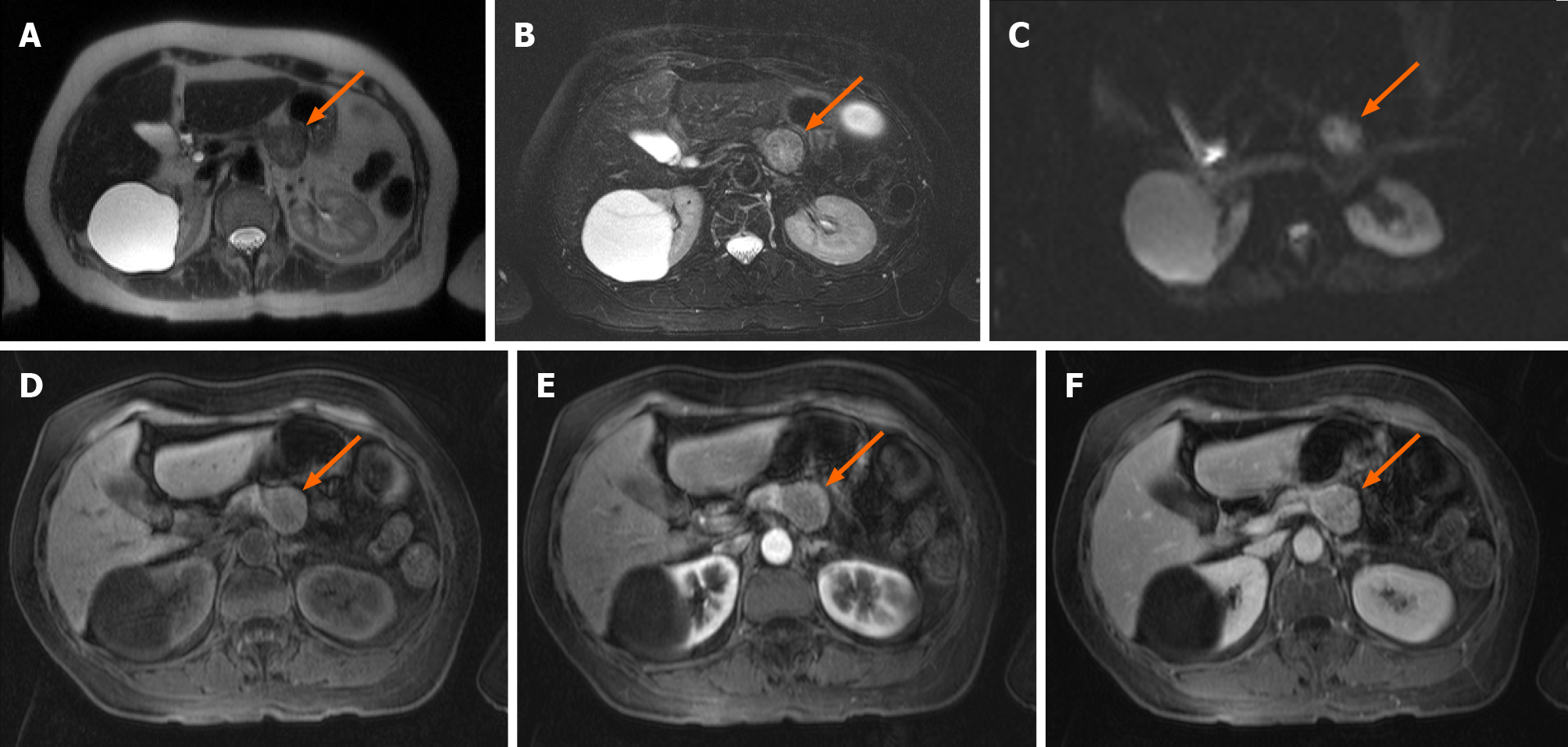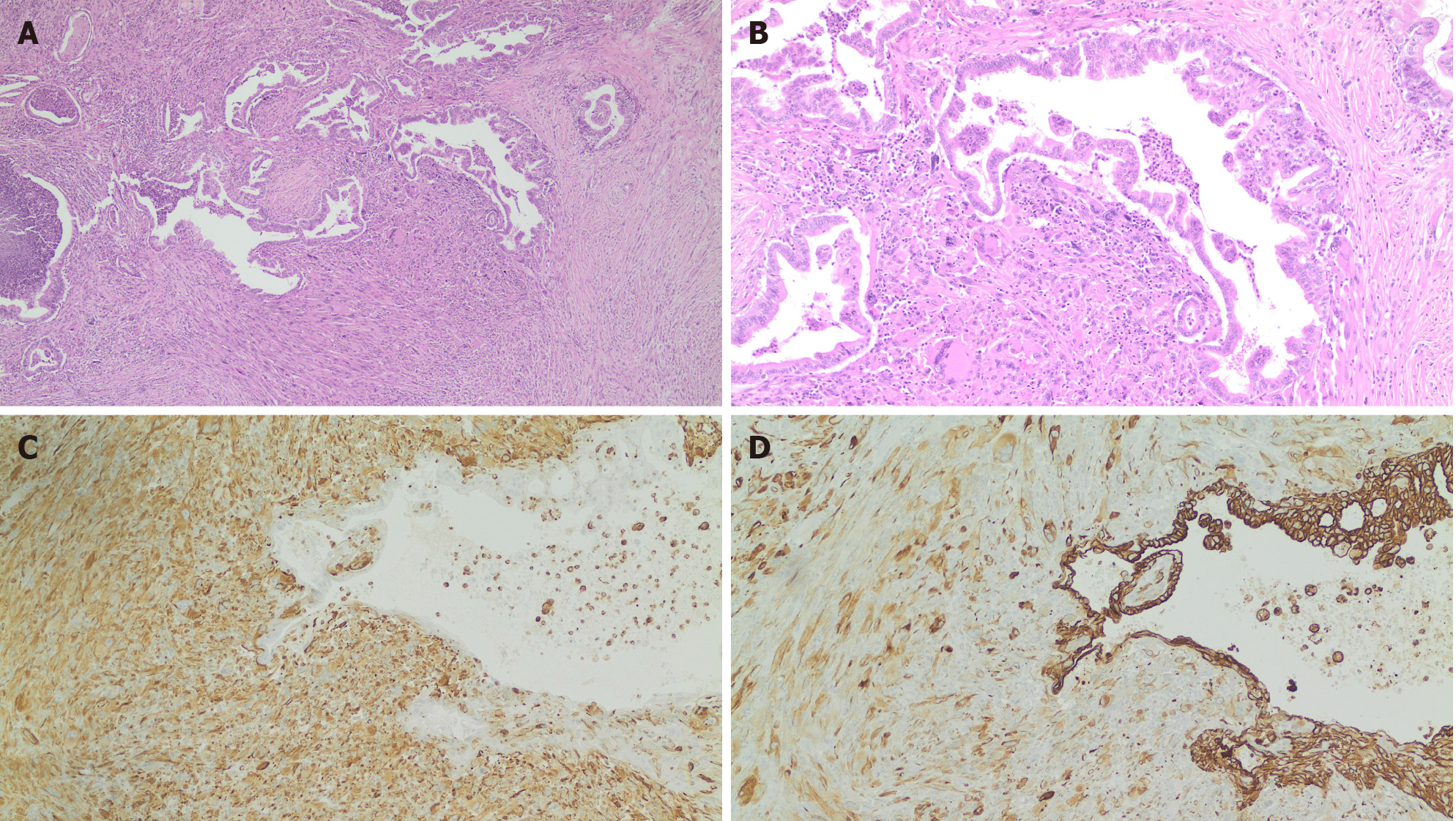Copyright
©The Author(s) 2021.
World J Clin Cases. May 26, 2021; 9(15): 3716-3725
Published online May 26, 2021. doi: 10.12998/wjcc.v9.i15.3716
Published online May 26, 2021. doi: 10.12998/wjcc.v9.i15.3716
Figure 1 Magnetic resonance imaging scan of the abdomen showing a distal pancreatic mass of 29 mm.
A: On the T2-weighted image, the lesion contained mixed signals (orange arrow); B: T2 fat saturation; C: Diffusion-weighted; D: T1-weighted fat sat gadolinium; E and F: T1-weighted image during arterial and portal phase that shows a hypovascular lesion.
Figure 2 Histological examination and immunohistochemical staining.
A and B: Histological examination of the pancreatic neoplasm reveals infiltration by malignant cells displaying a glandular and spindle-cell pattern. Hematoxylin and eosin, 4 × (A); Hematoxylin and eosin, 10 × (B). Glandular component lined by atypical epithelium and sarcomatous spindle cell component with pleomorphic giant cells; C: Immunohistochemical staining for pan-cytokeratin, 10 × (C). Glandular and sarcomatoid components are positive for this epithelial marker; D: Immunohistochemical stain for vimentin, 10 × (D). Vimentin is the most common mesenchymal marker. The epithelial glandular component is negative, and the sarcomatoid component is strongly positive.
Figure 3 Survival curves using the Kaplan-Meier method showing the overall survival of reported cases of sarcomatoid carcinomas.
The median overall survival times in patients with sarcomatoid carcinoma of the pancreas were 9 mo (range 0-27). The 5-year and 10-year survival rates were 41.25% and 20.63% respectively.
- Citation: Toledo PF, Berger Z, Carreño L, Cardenas G, Castillo J, Orellana O. Sarcomatoid carcinoma of the pancreas — a rare tumor with an uncommon presentation and course: A case report and review of literature. World J Clin Cases 2021; 9(15): 3716-3725
- URL: https://www.wjgnet.com/2307-8960/full/v9/i15/3716.htm
- DOI: https://dx.doi.org/10.12998/wjcc.v9.i15.3716











